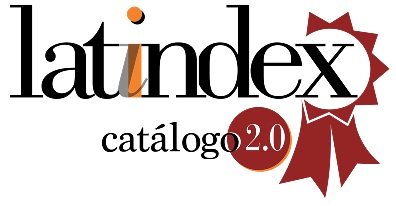Validación de la escala de rendimiento laboral individual en entornos virtuales (México, 2022)
DOI:
https://doi.org/10.5281/zenodo.10431420Palabras clave:
rendimiento laboral individual, entornos virtuales, teletrabajo, MéxicoResumen
El rendimiento laboral individual (RLI) es un pilar fundamental de toda organización, sin embargo, no es posible su medición precisa en todos los puestos de trabajo, en especial en aquellos de cuello blanco. El objetivo de este estudio fue determinar las propiedades psicométricas de la adaptación de la escala de RLI para los entornos virtuales, en población mexicana. Para cumplir el objetivo, se utilizó una muestra no probabilística de 332 teletrabajadores, por medio del análisis factorial exploratorio y confirmatorio, con ayuda de SPSS statistics, y AMOS Graphics, se realizaron las pruebas de validez y confiabilidad del modelo propuesto que se ajusta con cuatro dimensiones (F1 α=0.952, F2 α=0.913, F3 α=0.895, F4 α= 0.862) y 23 ítems, un CFI de 0.999, un TLI de 0.998 y un NFI de 0.963 y un RMSEA de 0.010 cumpliendo con los criterios de validez y confiabilidad.
Descargas
Citas
Aguinis, H., Gottfredson, R. K., & Joo, H. (2013). Avoiding a “me” versus “we” dilemma: Using performance management to turn teams into a source of competitive advantage. Business Horizons, 56(4), 503–512. https://doi.org/10.1016/j.bushor.2013.02.004
Ato, M., López, J. J., & Benavente, A. (2013). Un sistema de clasificación de los diseños de investigación en Psicología. Anales de Psicología, 29(3), 1038–1059. https://doi.org/10.6018/analesps.29.3.178511
Aubé, C., Rousseau, V., Mama, C., & Morin, E. M. (2009). Counterproductive behaviors and psychological well-being: The moderating effect of task interdependence. Journal of Business and Psychology, 24(3), 351–361. https://doi.org/10.1007/s10869-009-9113-5
Baruch, Y. (2000). Teleworking: benefits and pitfalls as perceived by professionals and managers. New Technology, Work and Employment, 15(1), 34-49. https://doi.org/10.1111/1468-005X.00063
Baruch, Y., & Nicholson, N. (1997). Home sweet work Requirements for effective home working. Journal of General Management, 23(2), 15–30. https://doi.org/10.1177/030630709702300202
Belzunegui-Eraso, A., & Erro-Garcés, A. (2020). Teleworking in the Context of the Covid-19 Crisis. Sustainability, 12(9), 3662. https://doi.org/10.3390/su12093662
Bennett, R. J., & Robinson, S. L. (2000). Development of a measure of workplace deviance. Journal of Applied Psychology, 85(3), 349–360. https://doi.org/10.1037/0021-9010.85.3.349
Escobedo Portillo, M. T., Hernández Gómez, J. A., Estebané Ortega, V., & Martínez Moreno, G. (2016). Modelos de Ecuaciones Estructurales: Características, fases, construcción, aplicación y resultados. Ciencia & Trabajo, 18(55), 16–22. http://dx.doi.org/10.4067/S0718-24492016000100004
Ferrando, P. J., Lorenzo-Seva, U., Hernández-Dorado, A., & Muñiz, J. (2022). Decalogue for the Factor Analysis of Test Items. Psicothema, 34(1), 7–17. https://doi.org/10.7334/psicothema2021.456
Fox, S., Spector, P. E., Goh, A., Bruursema, K., & Kessler, S. R. (2012). The deviant citizen: Measuring potential positive relations between counterproductive work behaviour and organizational citizenship behaviour. Journal of Occupational and Organizational Psychology, 85(1), 199–220. https://doi.org/10.1111/j.2044-8325.2011.02032.x
Gabini, S., & Salessi, S. (2016). Validación de la escala de rendimiento laboral individual en trabajadores argentinos. Revista Evaluar, 16(1), 10–26. https://doi.org/https://doi.org/10.35670/1667-4545.v16.n1.15714
Gamal Aboelmaged, M., & Mohamed el Subbaugh, S. (2012). Factors influencing perceived productivity of Egyptian teleworkers: An empirical study. Measuring Business Excellence, 16(2), 3–22. https://doi.org/10.1108/13683041211230285
Gentilin, M. (2020). Pasado, presente y futuro del Teletrabajo. Reflexiones teóricas sobre un concepto de 50 años. Academia Accelerating the worlds research.
Hinkin, T. R. (1998). A brief tutorial on the development of measures for use in survey questionnaires. Organizational Research Methods, 1(1), 104–121. https://doi.org/10.1177/109442819800100106
Hoffman, B. J., Blair, C. A., Meriac, J. P., & Woehr, D. J. (2007). Expanding the criterion domain? A quantitative review of the OCB literature. Journal of Applied Psychology, 92(2), 555–566. https://doi.org/10.1037/0021-9010.92.2.555
Koopmans, L., Bernaards, C., Hildebrandt, V., Van Buuren, S., Van Der Beek, A. J., & de Vet, H. C. w. (2013). Development of an individual work performance questionnaire. International Journal of Productivity and Performance Management, 62(1), 6–28. https://doi.org/10.1108/17410401311285273
Koopmans, L., Bernaards, C. M., Hildebrandt, V. H., De Vet, H. C. W., & Van Der Beek, A. J. (2014). Measuring individual work performance: Identifying and selecting indicators. Work, 48(2), 229–238. https://doi.org/10.3233/WOR-131659
Kowalski, K. B., & Swanson, J. A. (2005). Critical success factors in developing teleworking programs. Benchmarking: An International Journal, 12(3), 236–249. https://doi.org/10.1108/14635770510600357
Lepine, J. A., Erez, A., & Johnson, D. E. (2002). The nature and dimensionality of organizational citizenship behavior: a critical review and meta-analysis. The Journal of Applied Psychology, 87(1), 52–65. https://doi.org/10.1037/0021-9010.87.1.52
Lievens, F., Conway, J. M., & De Corte, W. (2008). The relative importance of task, citizenship and counterproductive performance to job performance ratings: Do rater source and team-based culture matter? Journal of Occupational and Organizational Psychology, 81(1), 11–27. https://doi.org/10.1348/096317907X182971
Lloret-Segura, S., Ferreres-Traver, A., Hernández-Baeza, A., & Tomás-Marco, I. (2014). El análisis factorial exploratorio de los ítems: Una guía práctica, revisada y actualizada. Anales de Psicologia, 30(3), 1151–1169. https://doi.org/10.6018/analesps.30.3.199361
Miles, D. E., Borman, W. E., Spector, P. E., & Fox, S. (2002). Building an integrative model of extra role work behaviors: A comparison of counterproductive work behavior with organizational citizenship behavior. International Journal of Selection and Assessment, 10(1–2), 51–57. https://doi.org/10.1111/1468-2389.00193
Mılası, S., González-Vázquez, I., & Fernández-Macías, E. (2021). Telework before the Covid-19 pandemic: Trends and Drivers of differences across the Eu. Oecd Productivity Working Papers, 21(21), 1–18. https://www.oecd-ilibrary.org/economics/telework-before-the-covid-19-pandemic_d5e42dd1-en
Morf, M., Feierabend, A., & Staffelbach, B. (2017). Task variety and counterproductive work behavior. Journal of Managerial Psychology, 32(8), 581–592. https://doi.org/10.1108/JMP-02-2017-0048
Quero, M. (2010). Confiabilidad y coeficiente Alpha de Cronbach. Telos, 12(2), 248–252.
Fernandez-del-Rio, E., & Koopmans, L., Ramos-Villagrasa, P. J., Barrada, J. R. (2019). Assessing Job Performance Using Brief Self-report Scales : The Case of the individual work performance questionnaire. Revista de Psicología del Trabajo y de las Organizaciones, 35(3), 195–205. https://doi.org/10.5093/jwop2019a21
Rotundo, M., & Sackett, P. R. (2002). The relative importance of task, citizenship, and counterproductive performance to global ratings of job performance: a policy-capturing approach. The Journal of Applied Psychology, 87(1), 66–80. https://doi.org/10.1037/0021-9010.87.1.66
Spector, P. E., & Fox, S. (2010). Theorizing about the deviant citizen: An attributional explanation of the interplay of organizational citizenship and counterproductive work behavior. Human Resource Management Review, 20(2), 132–143. https://doi.org/10.1016/j.hrmr.2009.06.002
Spector, P. E., Fox, S., Penney, L. M., Bruursema, K., Goh, A., & Kessler, S. (2006). The dimensionality of counterproductivity: Are all counterproductive behaviors created equal? Journal of Vocational Behavior, 68(3), 446–460. https://doi.org/10.1016/j.jvb.2005.10.005
Ventura-León, J. l., & Caycho-Rodríguez, T. (2017). El coeficiente Omega: un método alternativo para la estimacion de la confiabilidad. Revista Latinoamericana de Ciencias Sociales, niñez y juventud, 15(1), 625–627. https://www.redalyc.org/journal/773/77349627039/html/
Werner, J. M. (1994). Dimensions that make a difference: Examining the impact of in-role and extrarole behaviors on supervisory ratings. Journal of applied psychology, 79(1), 98–107. https://doi.org/10.1037/0021-9010.79.1.98
Descargas
Publicado
Cómo citar
Número
Sección
Licencia
Derechos de autor 2023 María Teresa Antonio Javier, Rosa María Nava Rogel, Rigoberto García Contreras

Esta obra está bajo una licencia internacional Creative Commons Atribución 4.0.






















